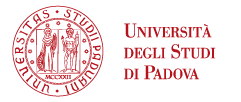Climate change and the evolution of Arctic rivers: a surprising finding related to permafrost thawing

Global warming is changing Arctic landscapes due to the thawing of permafrost, a perennially frozen layer of soil that has covered the Arctic tundra for millennia.
Permafrost thawing causes landslides and mudslides and, in extreme cases, can even lead to entire lakes drying up. Most alarming, however, is the potential release into the atmosphere of huge amounts of greenhouse gases - including methane, carbon dioxide, and nitrous oxide - that have been trapped in the permafrost for centuries. In fact, it is estimated that 1400 billion tons of carbon are frozen in the permafrost - four times the amount emitted by humans since the industrial revolution to date, and nearly twice the amount currently contained in the Earth’s atmosphere.
Significant greenhouse gas emissions in Arctic regions are also generated by the action of rivers, which, moving laterally at speeds of up to tens of meters per year, erode permafrost-rich soils. Water flowing down a sinuous river tends to erode sediment along concave banks and redeposit it along convex banks, thus resulting in river lateral migration over the years. Weakening of riverbanks due to permafrost thaw, as well as increased water and sediment fluxes due to cryosphere degradation, could promote bank erosion, increasing lateral river mobility and further changing atmospheric emissions.
But are rising temperatures and atmospheric moisture that promote thawing permafrost only having negative effects on the Arctic landscape?
To answer this question, an international research team has monitored the evolution of large rivers in Alaska and Canada and revealed how, as a result of the region’s strong warming, the rivers are not moving as scientists expected.
In the study, titled “Large sinuous rivers are slowing down in a warming Arctic”, published in Nature Climate Change, researchers have analyzed the evolution of the 10 largest Arctic rivers in Alaska (United States), Yukon (Canada), and the Northwest Territories (Canada) during the past 50 years.
The research, coordinated by Alessandro Ielpi of the University of British Columbia and conducted with Alvise Finotello from the Department of Geosciences at the University of Padua, Mathieu Lapotre at Stanford University (USA), and Université Laval’s Pascale Roy-Leveillée (Canada), reveals that warmer temperature also changes vegetation and surface water flows in the Arctic river plains. This would slow river erosion and could influence the release of greenhouse gases caused by permafrost thaw.
“We tested the hypothesis, widely accepted in the scientific community, that atmospheric warming and the resulting permafrost thaw weakens the banks and causes increased rates of lateral migration of Arctic rivers.” says Alvise Finotello.
“We used sequences of high-resolution satellite images covering a time span of about half a century. In total, we analyzed more than 1,000 kilometers of banks distributed along 10 rivers, all characterized by widths ranging between 100 and 1,000 meters, so that they could be easily identified even in the oldest satellite images dating back to the 1970s. The study was made possible by the remote-sensing methods that our research group has developed over the years, and which can be applied to river systems in a variety of climatic contexts, from tropical forests to deserts to precisely Arctic environments. Contrary to what we expected, our results show a surprising reduction in lateral migration rates of Arctic rivers on the order of 20 percent over the past 50 years, an estimate that may even be conservative given the analysis methods we used”
“This slowdown is most likely due to a series of indirect effects related to atmospheric warming and the subsequent thawing of permafrost. Higher temperatures promote vegetation development through warmer and longer growing seasons, a process known as Arctic greening”, explains Alessandro Ielpi of the University of British Columbia, the first author of the study and a former visiting scientist at the Department of Geosciences at the University of Padua in 2019.
“In addiction, the thawing of permafrost allows the roots of shrub species to penetrate deeper into the soil. Deeper roots increase bank strength and the water retention capacity of river floodplains, thereby reducing bank erosion rates and the rate of lateral migration of Arctic rivers”, adds Alessandro Ielpi
Because reduced river mobility has a direct impact on the fluxes of greenhouse gases released to the atmosphere by erosion of permafrost-rich soils, the results of the study will have important ramifications for global emissions budgets and associated future climate changes.
Link to research: https://doi.org/10.1038/s41558-023-01620-9
Titolo: “Large sinuous rivers are slowing downin a warming Arctic” – «Nature Climate Change» – 2023
Authors: Alessandro Ielpi, Mathieu G.A. Lapôtre, Alvise Finotello, Pascale Roy-Léveillée





